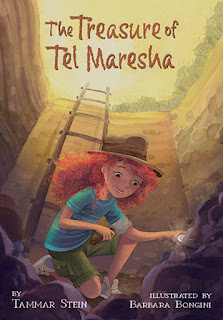Jan D. Payne is the author of the new novel Rabbit Moon. Also a physician, she lives in Minnesota.
Q: What inspired you to write Rabbit Moon, and how did
you create your character Marin Sinclair?
A: Marin Sinclair is an amalgamation of my experiences
while living in Dinetah—the country, the people, the Navajo culture—and the stories
I myself love to read—mystery, adventure, suspense, fantasy, differing
cultures, life’s crossroads, romance, historical…for isn’t exploring new worlds
and people why we read stories?
I have always loved writing…short stories, poems, essays,
etc., and when I began writing Rabbit Moon, our family lived on St. Paul Island,
Alaska—an Aleut Native American village—where my husband was head principal and
our daughter was in middle school.
At the time, I was not practicing medicine (no clinic
on the island!) and I was taking a writing course offered by the school’s
English teacher. She suggested I write a series of stories about my early life “on
the rez”—stories I told my two children about growing up in the Southwest in
the Four Corners Area—the Dineh (Navajo) reservation. I used those stories,
with embellishments, as the basis for Rabbit Moon.
Q: How was the book’s title chosen, and what does it
signify for you?
A: The title “Rabbit Moon” was chosen for its literal
reference to the “rabbit in the (full) moon”…a cultural difference I chose to
highlight because of the contrast to the “man in the moon” motif widely
accepted by American/Anglo culture. It is one of the first things I remember
being told by a Dineh classmate after our move to the “rez.”
At the time, I was very indignant—everyone “knows”
it’s a “man in the moon”—and over the years that incident came to represent how
I felt then, how a different way of seeing things, a different way of thinking,
and especially a willingness to learn new things was necessary if I wanted to
make friends and “fit in.”
That need and a natural curiosity opened a new world.
I’ve since lived in many different places and cultures—Mexico, Alaska, Canada,
Kenya—and have found each place fascinating in its diversity.
Q: Did you know how the novel would end before you
started writing it, or did you make many changes along the way?
A: I write as a plotter and not a pantser (writing
without a definite plot; i.e., by the “seat of your pants”), so I had the
ending of Rabbit Moon planned and plotted to the nth degree…but a funny thing
happened along the course of writing the book; the characters took over with
their own “say” in events!
Most writers I meet spend an inordinate amount of time
dreaming up stories, imagining exactly how they progress and how they might end,
but I was surprised at the way Rabbit Moon ended. (For example, Vangie’s son,
Garret Washburn, and the role he played, was not planned.)
Q: What do you hope readers take away from the novel?
A: The take-away from the book that I’d like readers
to have is the understanding that one’s own culture is just that—one’s own, and
one of many, cultures. So much of our understanding of others depends on our
exposure—to other backgrounds, religions, outlooks, customs, languages—and a
willingness to explore, to interact.
I am not Native American (nor is Marin Sinclair), and
I hopefully avoid the errors of misappropriation caused by lack of respect,
stereotyping, flippancy with the sacred or the ancient, historical one-sidedness,
or a treatment of the Dineh culture as Marin’s own, but that said, we each have
our own, lived, story to tell. It is our perspective and experience that
creates a unique story…a story which belongs to us.
Q: What are you working on now?
A: Marin Sinclair, Book Two, is finished with a
publication date set for August of this year. Much of the story takes place in
Canyon de Chelly, and the book has the working title of “Changing Woman’s Hair”—
a reference to the black streaks of rock varnish on canyon walls that the Dineh
call “Changing Woman’s Hair.” (Changing Woman is one of the Holy People in
Dineh belief, representing the harmony in the life-change cycles we experience
as humans.)
Through a series of life and death encounters that
take place during the annual Navajo Nation Fair in Window Rock, Arizona, we
discover more of Marin’s life—will she accept the responsibility of Garret’s
guardianship? How far does friendship go in honoring the last wish of a dying
friend? Does Marin want to return to the reservation?
She has a life in Flagstaff now, a job, a home, but
what about her prior history with Sgt. Justin Blue Eyes or her recent
mountaintop experience with agent Cullen MacPherson?
We also discover more about the mysterious Lewis
George…as I am weaving elements of myth and mystical experience into the new
stories.
Q: Anything else we should know?
A: Finally, there is one thing I’d like to say about
writing. The best advice I ever received (from Minnesota author Allen Eskens)
was to take every writing class I could find over the course of a year and to
read the best books on writing before I attempted to write a novel.
I thought I knew how to write—I’ve been doing it most
of my life!—but as they say, you don’t know what you don’t know. I followed his
advice…and I am still following his advice. There’s so much to learn, and it
takes time to get it right. So, please be patient: I’m still practicing.
--Interview with Deborah Kalb





















